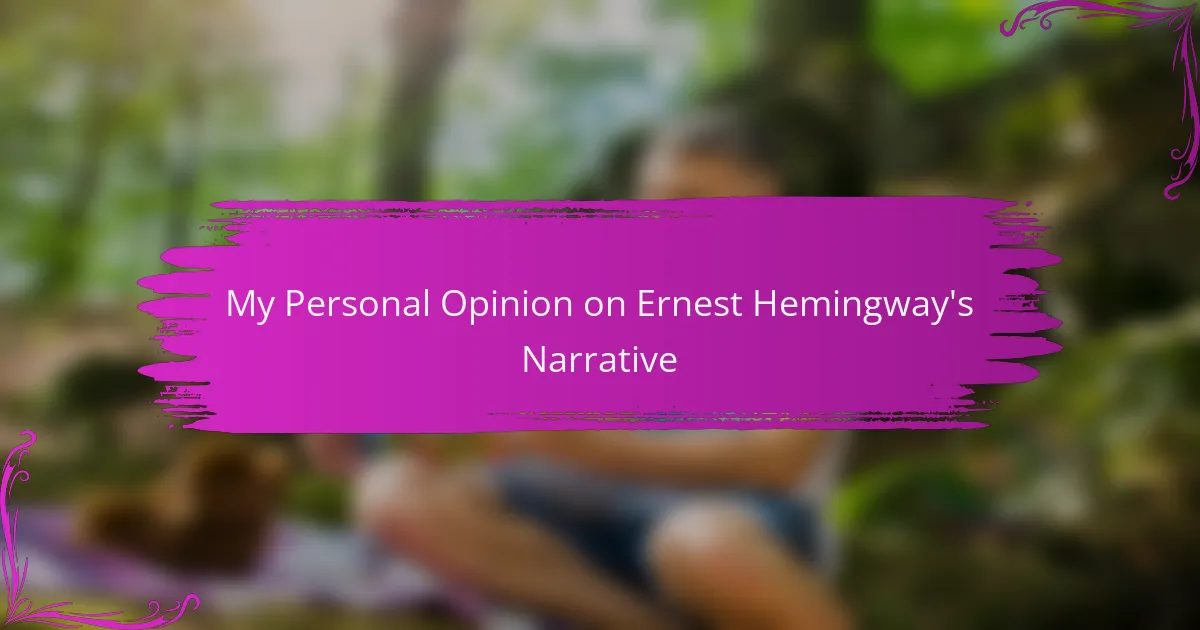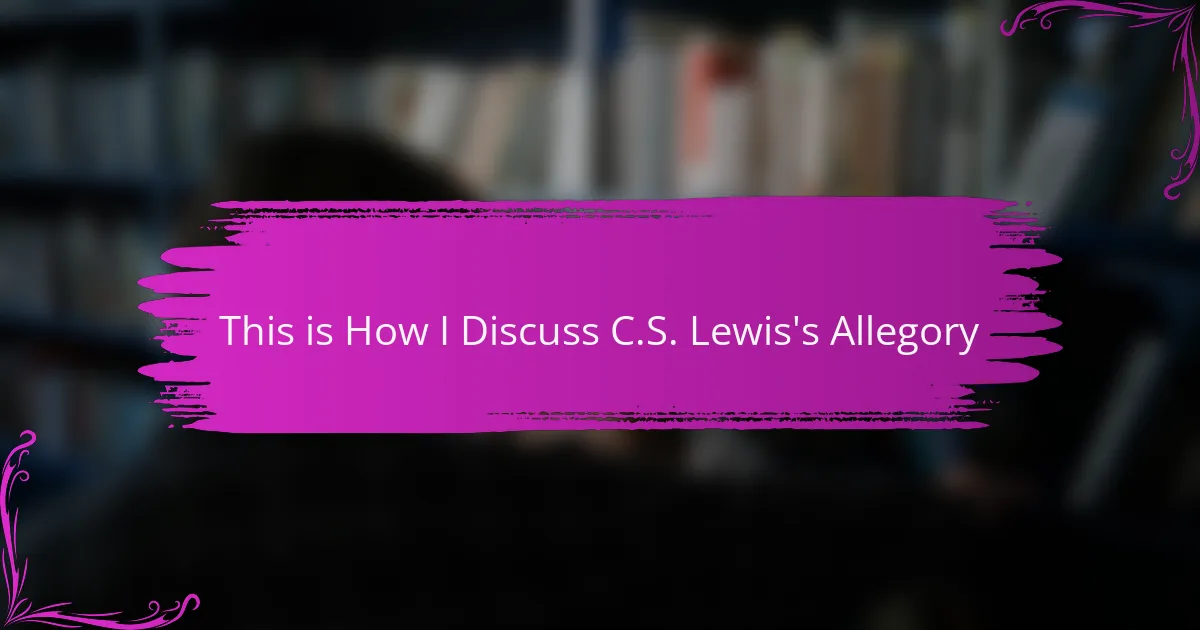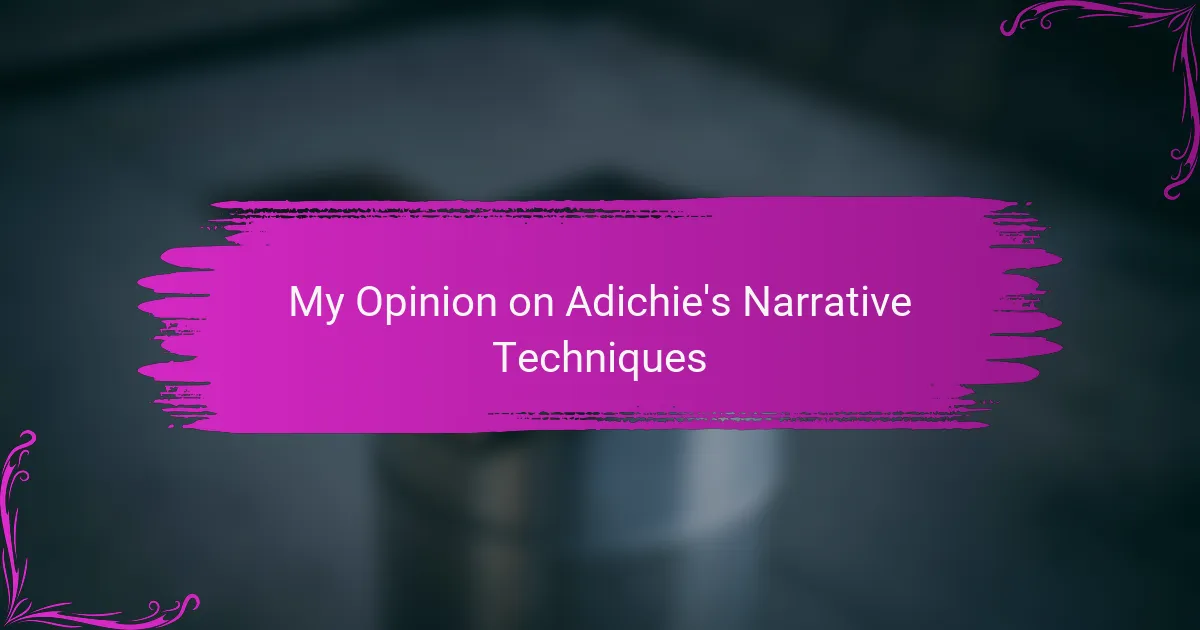Key takeaways
- Mark Twain’s humor combines satire, wit, and keen social observation, making his critiques of society engaging and thought-provoking.
- Humor in literature, as exemplified by Twain, facilitates connections among readers, promotes empathy, and makes complex topics more accessible.
- Twain’s techniques, such as exaggerated traits and witty dialogue, highlight human behavior’s absurdities while fostering deep insights.
- Practical exercises, like rewriting serious articles in Twain’s style, can help readers appreciate the nuances and relevance of his humor today.
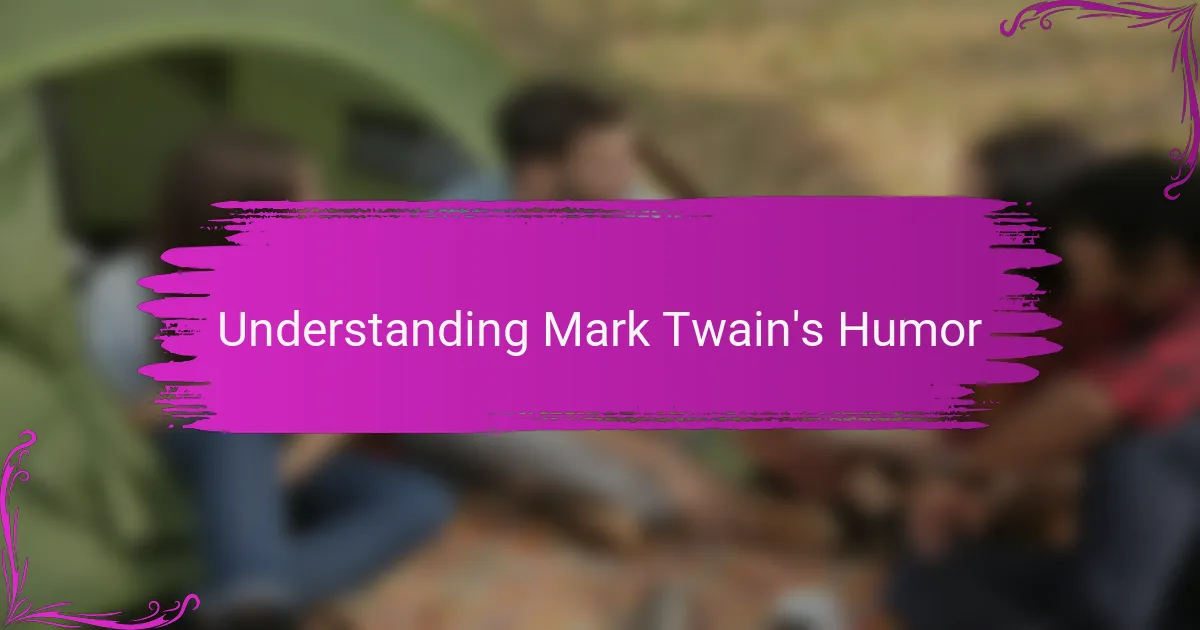
Understanding Mark Twain’s Humor
Mark Twain’s humor is a unique blend of satire, wit, and keen observation of human nature. I remember the first time I read “The Adventures of Huckleberry Finn,” and I couldn’t help but laugh at Huck’s innocent yet astute observations about society. Twain’s ability to intertwine humor with commentary on morality and social issues makes his work not just entertaining but thought-provoking.
His humor often comes from exaggeration and irony, which I’ve found to be an effective way of highlighting absurdities in everyday life. For instance, consider how Twain used regional dialects to add color and authenticity to his characters, making their quirks all the more relatable. Here are some key elements that define Twain’s humor:
- Satirical Social Commentary: Twain critiques societal norms, revealing the absurdities in attitudes toward race, class, and morality.
- Witty Dialogue: His characters engage in sharp, clever exchanges that bring them to life while delivering poignant jokes.
- Exaggeration: Twain often amplifies traits or scenarios for comedic effect, making the humor all the more striking.
- Regional Voices: Through different dialects, he captures the essence of his characters’ backgrounds, enhancing both humor and authenticity.
- Irony and Paradox: He highlights the contradictions in human behavior, using irony to showcase life’s complexities and absurdities.

Importance of Humor in Literature
Humor in literature serves as a powerful tool for connection. When I read Twain, I often find myself laughing, but there’s always a deeper insight lurking just beneath the surface. Isn’t it fascinating how a well-timed joke can lighten heavy topics while simultaneously provoking thought? This duality makes humor essential in exploring complex social issues, as it encourages readers to reflect without feeling overwhelmed.
Additionally, humor creates an accessible entry point for readers of all ages. I remember sharing Twain’s works with my students, watching their eyes light up as they discovered the humor in Huck Finn’s adventures. They were more willing to engage with the themes of friendship and morality simply because humor softened the narrative’s edges. This accessibility is crucial in literature—it invites discussions that might otherwise feel too daunting.
Moreover, humor fosters empathy. Through Twain’s witty characters and their misadventures, I found that readers often relate to their quirks and flaws. This connection fosters understanding, as laughter allows us to see our shared humanity. Have you noticed how laughter breaks down barriers, making us more open to diverse perspectives? That’s the beauty of humor in literature; it encourages us to explore new ideas while enjoying the ride.

Analyzing Twain’s Humor Techniques
Twain’s use of satirical social commentary always impresses me. It’s like he had this uncanny ability to peel back the layers of society with just a well-placed joke. I remember reading “The Gilded Age” and chuckling at his critique of greed and ambition; his humor forced me to reflect on my own values. Isn’t it fascinating how he wrapped serious critiques in humor, making us question our own beliefs without even realizing it?
Another technique I admire is his witty dialogue. Twain’s characters often engage in exchanges that feel so real and relatable. I once found myself laughing out loud at a conversation between Huck and Jim; their banter made their friendship feel genuine and highlighted the absurdity of their circumstances. I’ve realized that humor can amplify human connection, transforming everyday conversations into profound insights about life.
Exaggeration is another hallmark of Twain’s humor that never ceases to amuse me. Take his vivid character descriptions—each exaggerated trait paints a picture so absurd it practically bursts with life. When I read his portrayal of a pompous character insisting he’s the best hunter, I can’t help but visualize the scene and laugh. Isn’t it intriguing how hyperbole can provoke laughter while also spotlighting the shortcomings that many of us share?

Resources for Studying Twain’s Works
When delving into Mark Twain’s humor, it’s essential to have the right resources at hand. I often rely heavily on annotated editions of his works, which provide insights into Twain’s satirical style and the historical context behind his jokes. Having access to literary criticism and analysis can also deepen my understanding, as it highlights viewpoints I might not have considered.
One of my favorite resources is the collection of Twain’s letters and essays. They reveal his sharp wit and give a glimpse into his everyday life. Each reading reminds me of the cleverness and insight that pervades not only his fiction but also his personal correspondence.
For those studying Twain, I’m always on the lookout for documentaries about his life. They add a rich layer of context, showing how his experiences shaped his humor. Engaging with a mix of primary texts, criticism, and multimedia materials enriches the overall experience of exploring Twain’s genius.
| Resource Type | Example |
|---|---|
| Annotated Editions | The Annotated Huckleberry Finn by Michael Patrick Hearn |
| Literary Criticism | Mark Twain’s Humor: The Light and the Dark by R. Kent Rasmussen |
| Documentaries | Mark Twain (by Ken Burns) |
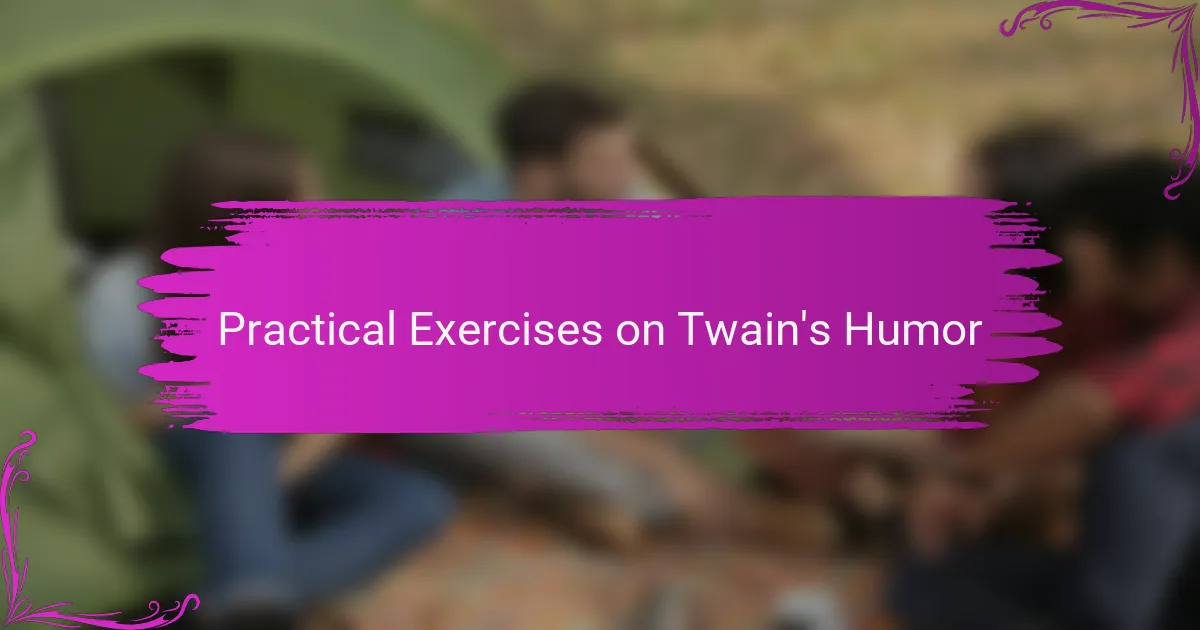
Practical Exercises on Twain’s Humor
To truly grasp Mark Twain’s humor, engaging in practical exercises can illuminate the nuances of his wit. One effective exercise is to read selected excerpts from “The Adventures of Huckleberry Finn” and identify moments of irony and satire. Reflecting on why these moments make you laugh or provoke thought helps connect Twain’s humor to contemporary situations I’ve encountered in my own life.
Another fun activity is to rewrite a serious news article in Twain’s signature style. I once tried this with a local story, and the results were hilarious! I found that channeling Twain’s perspective transformed mundane events into something vibrant and entertaining, showcasing his unique ability to find humor in everyday life.
Here’s a comparison table that highlights different styles of humor found in Twain’s works:
| Humor Type | Description |
|---|---|
| Ironic Humor | Uses contradictions to reveal underlying truths, often making the reader reflect. |
| Satirical Humor | Critiques society and human nature, challenging norms through exaggeration. |
| Folkloric Humor | Incorporates local dialects and storytelling, drawing from cultural backgrounds. |
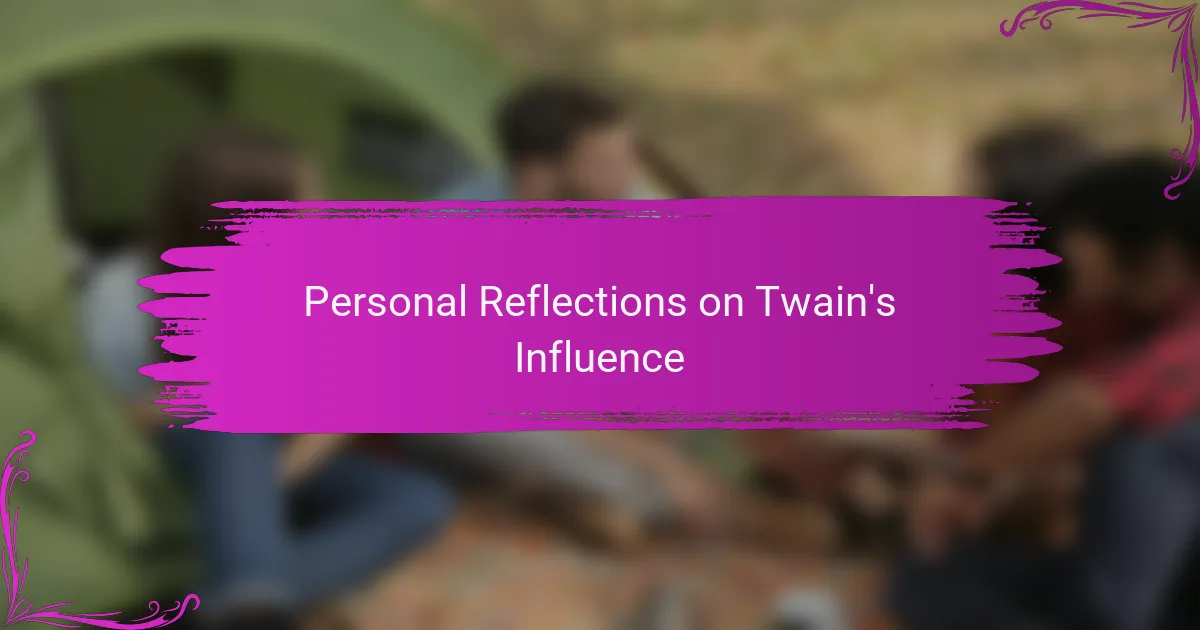
Personal Reflections on Twain’s Influence
Twain’s influence on my understanding of humor is profound, as his work often reflects the complexities of human interaction. I remember a moment in my life when I faced a challenging situation, and recalling a funny anecdote from “The Adventures of Tom Sawyer” lightened my mood, reminding me of the importance of laughter amidst adversity. It’s astonishing how Twain’s humor uplifts while simultaneously asking us to question societal norms.
Reflecting on Twain’s wit, I find it incredibly refreshing how he balances levity with deep social commentary. His ability to make us chuckle while exposing the absurdities of life is something I strive to emulate in my own writing. Have you ever experienced that moment where a joke took you by surprise, prompting you to reflect on your own beliefs? There’s something magical about that blend of humor and insight that I treasure in Twain’s works.
Moreover, I often find myself thinking about how Twain’s humor has shaped my perspective on the world. The way he approaches heavy topics with a light touch serves as a reminder of the healing power of laughter. I once shared a passage from “Huckleberry Finn” in a classroom discussion, and the laughter that erupted was palpable. It transformed our space into one of openness and honesty, encouraging everyone to engage with the text on a deeper level. Twain’s humor continues to inspire me to be more thoughtful and inclusive in my own interactions.

